I mentioned in my post from the Friday before last that we had plans for the blackberries that the kids picked in the garden. We were all very excited about this as it is something that we’ve never tried before but have been meaning to do for some time: making fruit leather. Fruit leather is simply fruit dried into a thin, chewy sheet.
In the River Cottage Handbook on Preserves, Pam Corbin has a recipe for a blackberry and apple fruit leather, so we decided to give that a go using the blackberries from the garden (topped up with the ones I foraged in my lunch break), and some windfall apples that our neighbour gave us. The eagle-eyed reader may also notice that there are a couple of smaller apples in the following photo. These weren’t windfall, but were apples I picked whilst thinning our Bramley tree. We try to keep food waste to a minimum in our house!
Since the recipe is from a published book I won’t share it in detail. However, I did notice that the blackberry and apple fruit leather recipe is one of the sample pages visible on Amazon, so you can probably make it out from that preview if you so desired. Better still get the book from the library, you won’t regret it. That was what I did, but within about thirty seconds of opening the book I knew I had to get my own copy, this is a book that you will use time and time again.
After chopping the apples, we put them into a large pan and added the blackberries. We brought this to the boil until the desired soft consistency was achieved.This recipe called for honey to be added. Most other recipes I’ve seen have used sugar, but this recipe worked very well.
Once the fruit was softened we sieved it (to remove the blackberry seeds) and spread it on to greaseproof paper on two baking trays (technically it was one baking tray and one pizza pan, as that was all I could find) and dried it overnight in the oven. I spoke to a local smallholder once and he dried his fruit leather in a solar drier that he made. However, despite resolving to do so every year, I’ve still not made a solar drier, so we followed the recipe and used the oven.
The next morning our fruit leather was dry. The round leather (the one from the pizza pan), we sliced into strips and ate over the next few days. The kids quickly dubbed the fruit leather ‘the giant sweet’. We had to ration it otherwise it would have been devoured in minutes. It truly was delicious. I remember buying strips of dried fruit as a child from a local health food shop, and it tasted exactly like those.
The book says it should last for five months in an airtight container. Provided with this information, our eldest quickly calculated that we could keep the other sheet (the one from the baking tray) until Christmas, and has since made detailed plans of how we will spend our Christmas Eve, the centre piece of which will apparently be fruit leather. So I left that sheet attached to the greaseproof paper and cut it into strips just narrower than the height of a spare airtight jar we had, and put all of the strips into the jar.
The jar has now been put in the store cupboard with our apricot jams and the last of 2014’s green tomato chutney. Maybe it’ll last until Christmas, but I was just asked whether we could take just a small piece out to eat now, so I’m guessing it won’t. There are still a lot of blackberries around, so if I can resist the temptation to turn them all into jam, I suspect we’ll be making more of this in the near future.


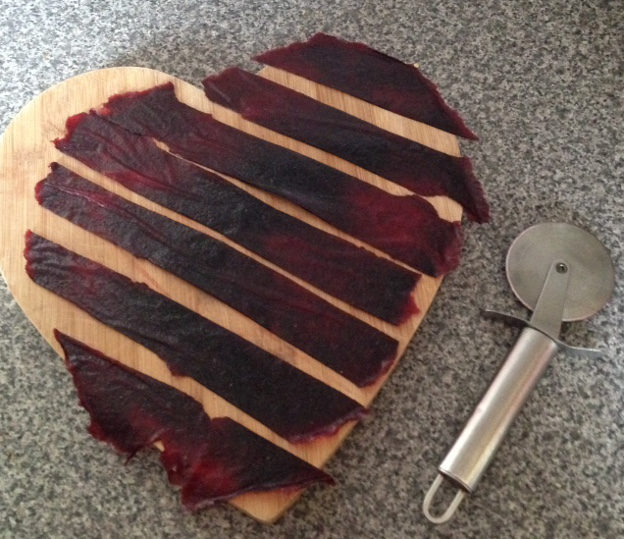
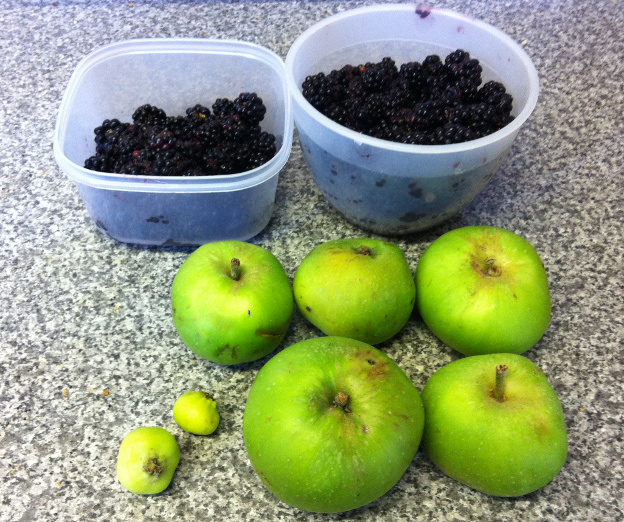
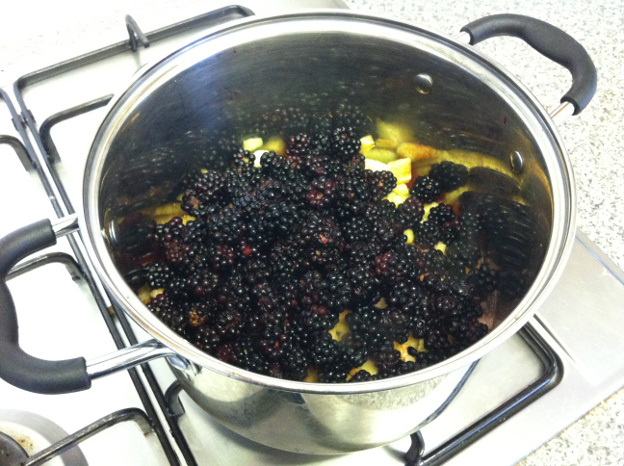
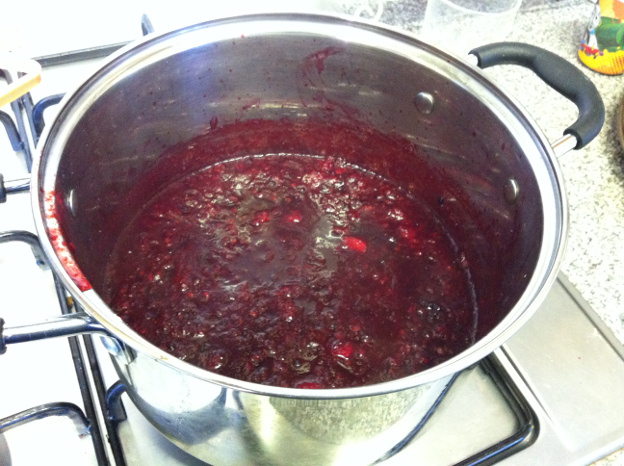
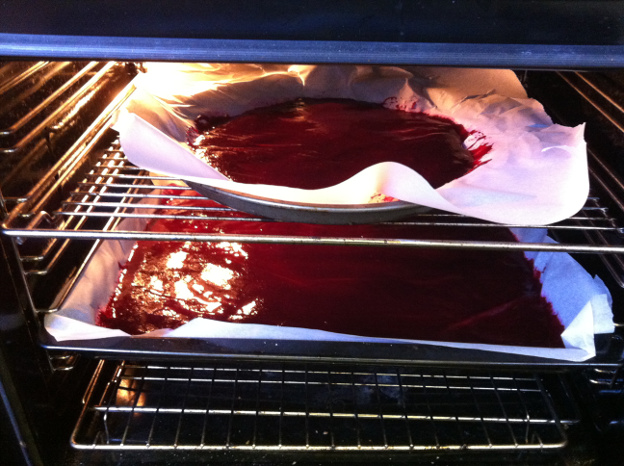
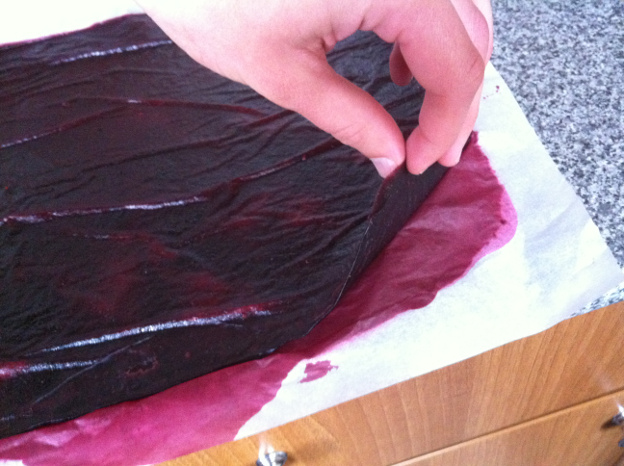
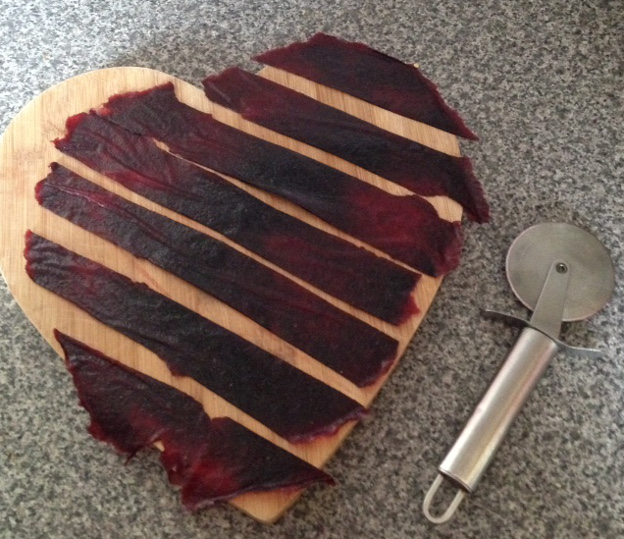
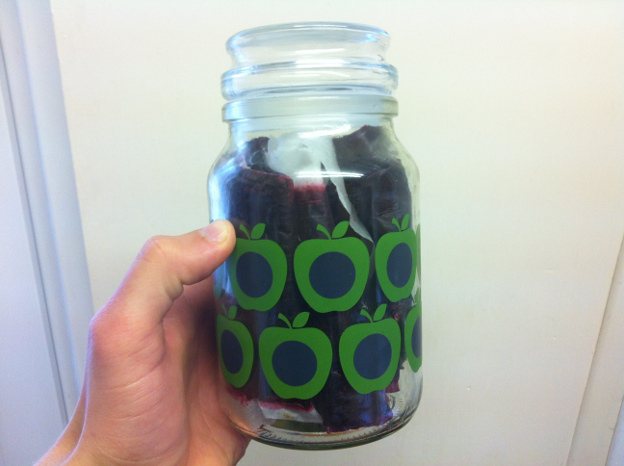
Great Blog. Very much enjoyed reading.